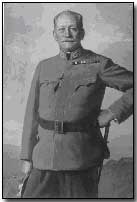Who's Who - Alois Fürst Schönburg-Hartenstein
 Alois
von Schönburg-Hartenstein (1858-1944) was born on 21 November 1858 in
Karlsruhe (Baden) the son of Prince Alexander von Schönburg-Hartenstein and
his wife Caroline (born Princess of Liechtenstein).
Alois
von Schönburg-Hartenstein (1858-1944) was born on 21 November 1858 in
Karlsruhe (Baden) the son of Prince Alexander von Schönburg-Hartenstein and
his wife Caroline (born Princess of Liechtenstein).
At the time of his birth his father served as imperial envoy to the court of the Grand-duke of Baden. As the eldest son he received a strict education and was sent as a child to the Jesuit college at Kalksburg and thereafter the cadet school at Dresden.
Following the completion of his military education Schönburg-Hartenstein rejoined his father in Vienna and in April 1877 joined Dragoon regiment 14. He was subsequently commissioned a lieutenant in the regiment in May 1878.
In 1882-1883 he attended the military riding instructors institute in Vienna. As a first lieutenant he attended the War School in 1884-1886.
He served as captain on the general staff for a while, then as staff officer in 5th Corps. He served some time in the military intelligence department during which he was involved with matters regarding Germany. Having been promoted major in the 2nd Dragoons he served for a period as military attaché in Berlin and was then installed as one of the old Kaiser's personal adjutants.
When his father died in 1896 he interrupted his career and was placed on the reserve list as a lieutenant-colonel, dedicating himself to managing the family estate.
As a Prince he had a seat in the hereditary House of Lords of the Austrian parliament in which he served as President of the centre party. In 1898 he was elected vice-president of the House of Lords, a position he held until 1918. He also served as head of the Austrian Red Cross and was responsible for providing aid material during the Balkan Wars. In 1903 he was awarded the Order of the Golden Fleece.
By the start of the First World War Schönburg-Hartenstein had reached the rank of major-general in the reserve. In August 1914 he was given command of 11th Brigade. His unit was sent to the aid of 3rd Corps in Galicia during which it received heavy casualties.
In September 1914 he was given command of 88th Landesschützenbrigade comprised mainly of mountain troops. In December he took part with his brigade in the battle of Limanowa-Lapanow. Promoted Feldmarschall-leutnant he led his troops from the front and was wounded in the shoulder on Christmas Eve 1914.
He was given command of 6th Infantry division on 26 December. With this unit he took part in the offensive to Nodworna in February 1915. In April 1915 he was given the command over a corps during the advance to Gorlice and the Deniestr.
In October he was again in command of 6th Infantry Division and was sent to the Italian front were his troops held Monte San Michele.
In July 1916 he took over command of 20th Corps from Archduke Karl and was promoted General der Kavallerie the following month. In 1917 he held the line in South Tyrol and in August he was given command over 4th Corps with which he took part in the Eleventh Battle of the Isonzo.
In February 1918 he was recalled to Vienna where Emperor Karl asked him to become prime minister in order to create a super ministry charged with retaining order behind the front lines. Due to the opposition of the Minister of War and the Chief of Staff however nothing came of this plan. A disappointed Schönburg-Hartenstein received permission to return to his troops.
During the Piave offensive in June 1918 while leading his troops from the front he was hit in the stomach and wounded by a shell splinter. After a stay in hospital he returned to the front on 16 July to take command of 6th Army. On 27 October the Italians broke through his line and a retreat began on 29 October.
On 1 November he was recalled but on 5 November he returned to his army headquarters. He was promoted colonel-general on 11 November - the last such promotion - and was released from service on 16 November.
After the war he served as president of the Austrian state comrades and war veterans association and as president of the union of catholic nobles.
On 21 September 1933 the then 75-year old prince was appointed by Chancellor Dollfuss as State Secretary of Defense. He became Minister of Defense on 12 March 1934. Three months later the Prince retired from his ministry because of the failure to implement his plans to bring about an apolitical army and the revocation of the Habsburg amendment.
During the last years of his life he retreated to his estate at Hartenstein in Saxony where he died on 20 September 1944, aged 85. He was married to Countess Johanna Colloredo-Mansfeld with whom he had two sons and four daughters.
Contributed by Frederik Dewaele
A "blimp" was a word applied to an observation balloon.
- Did you know?
